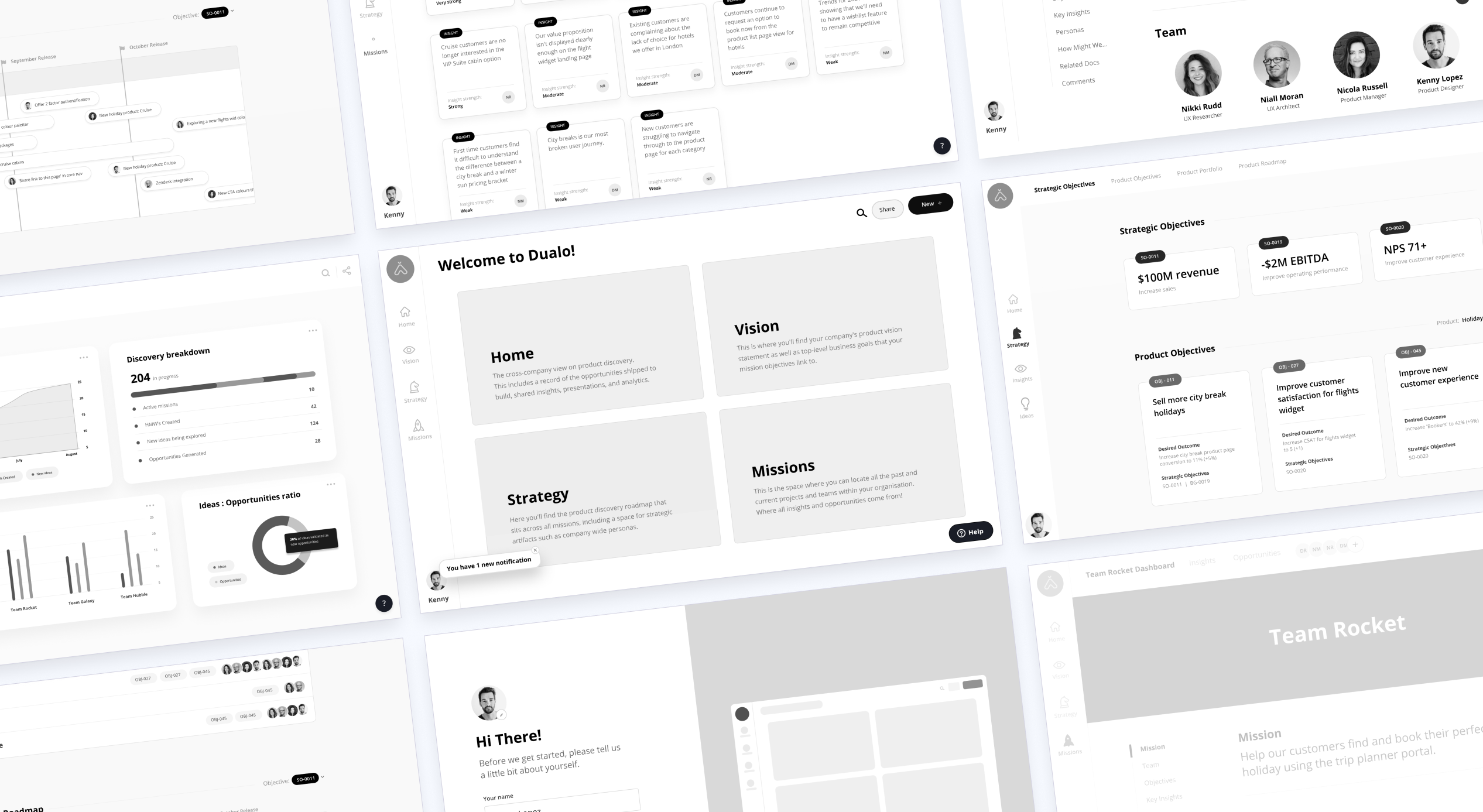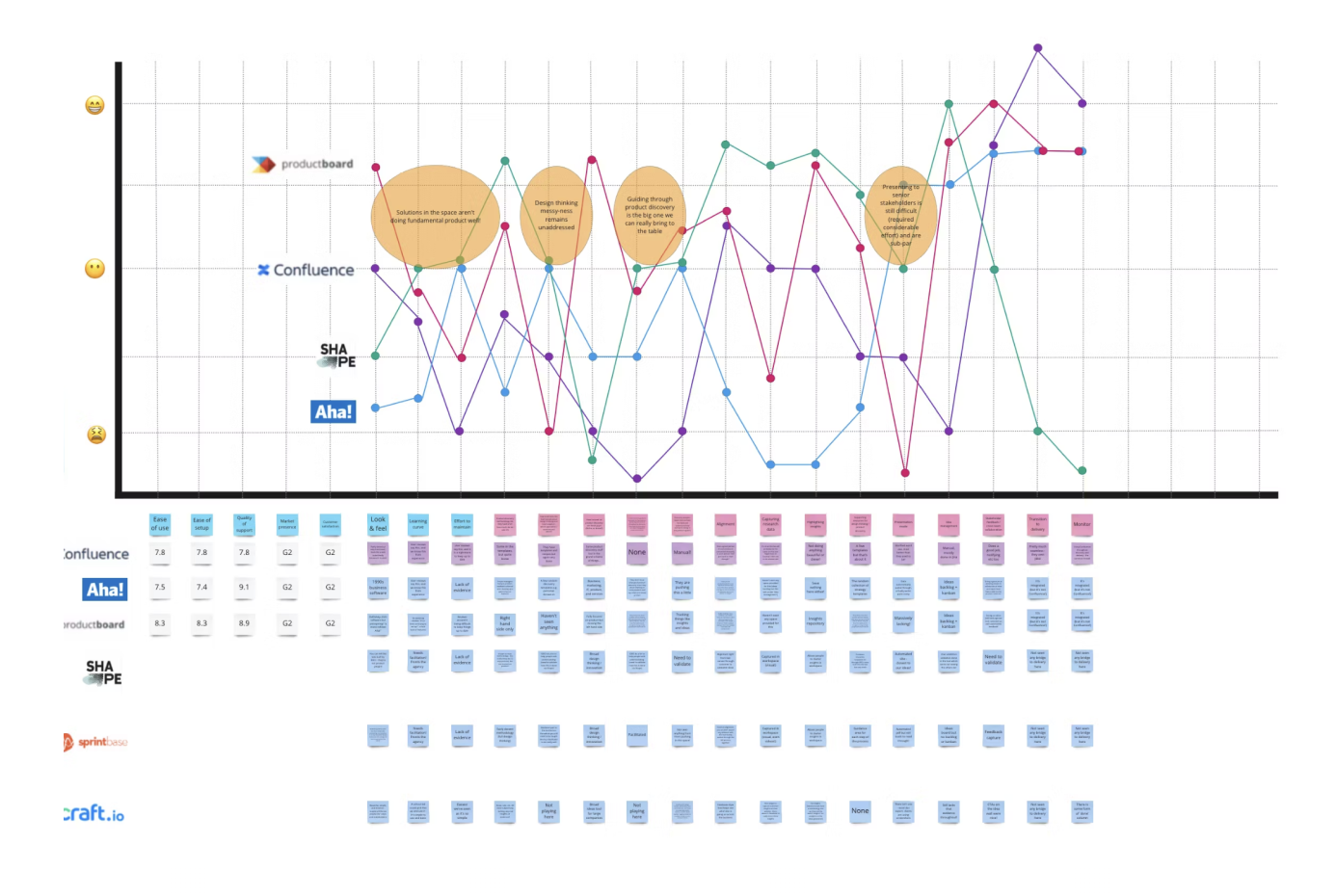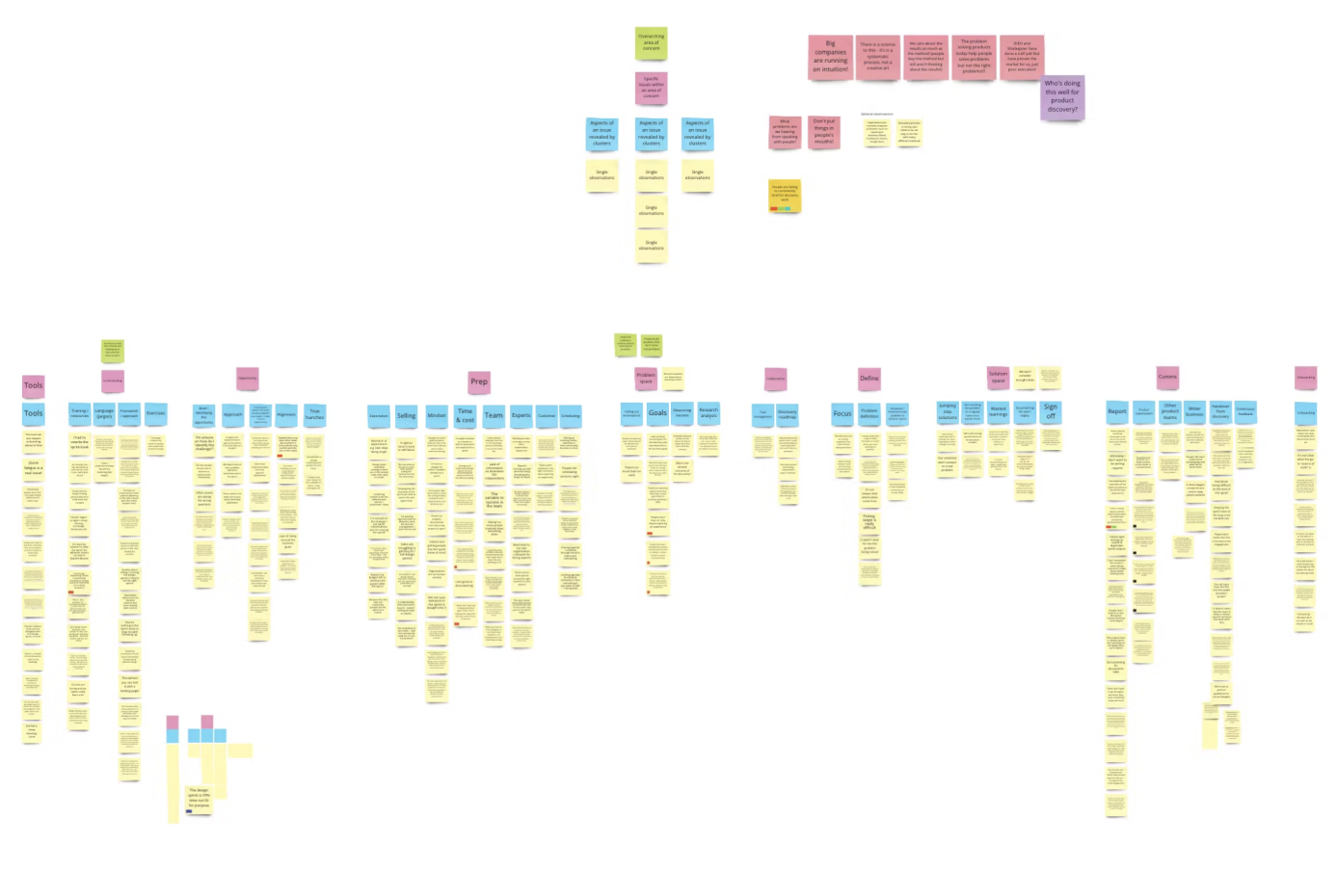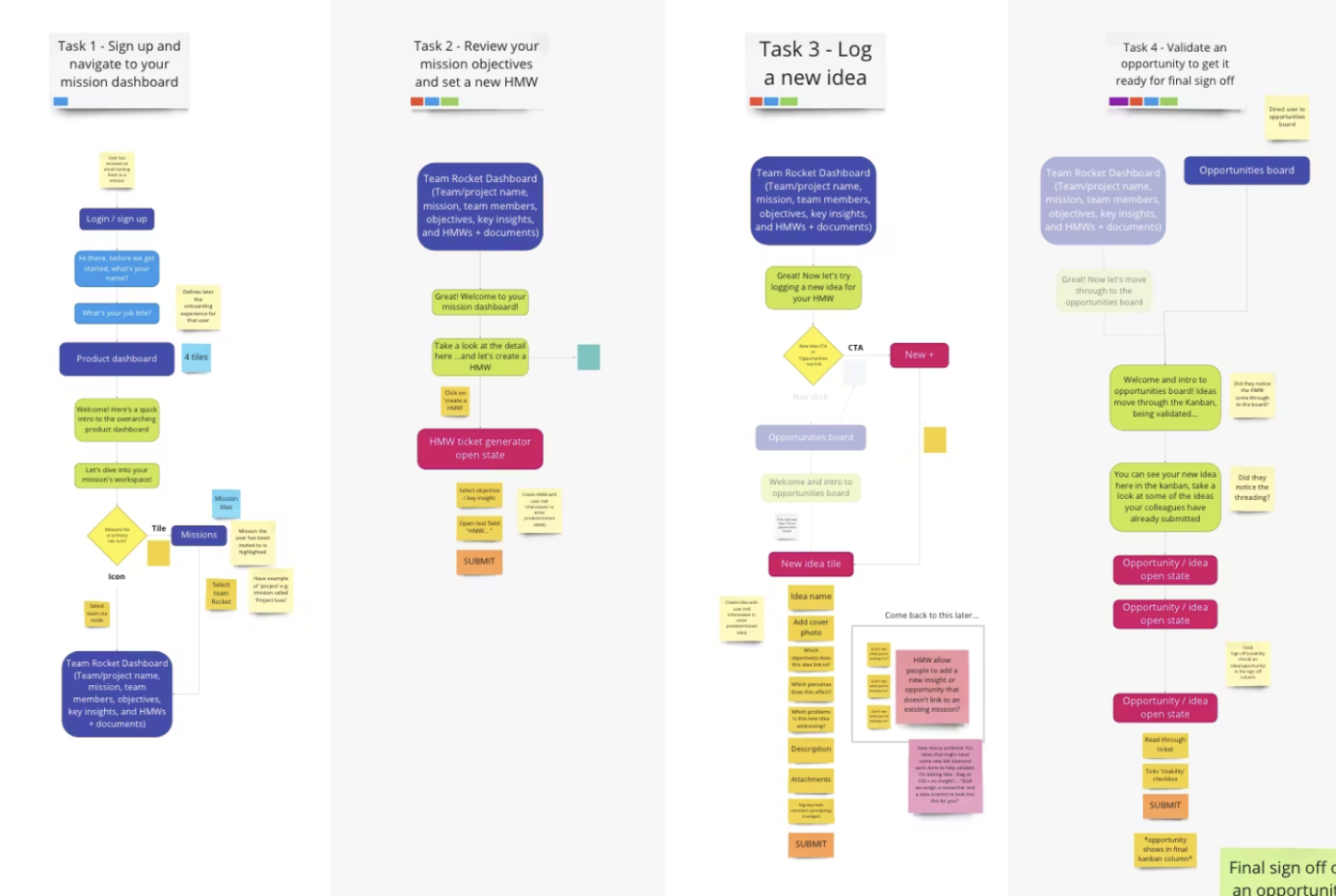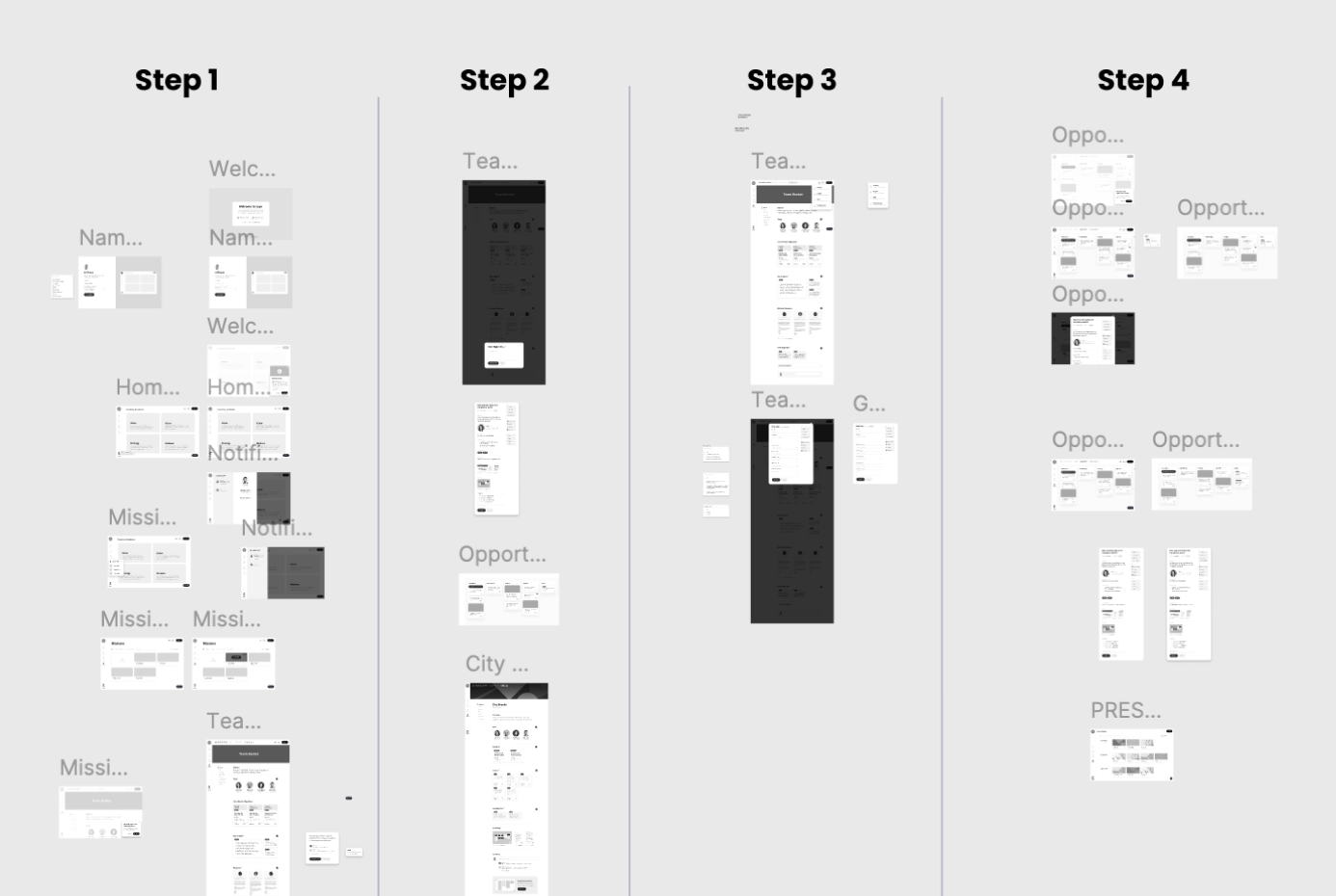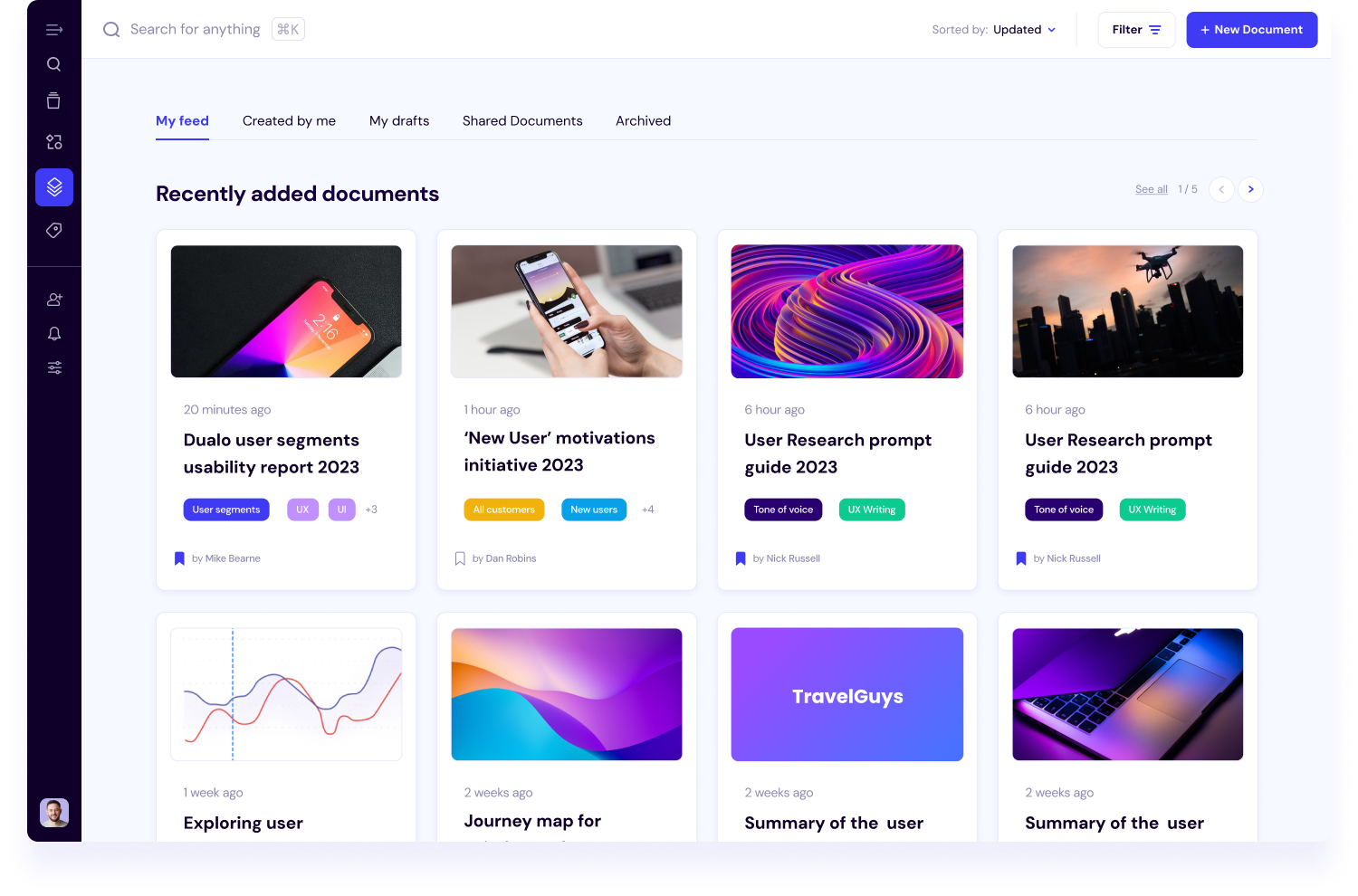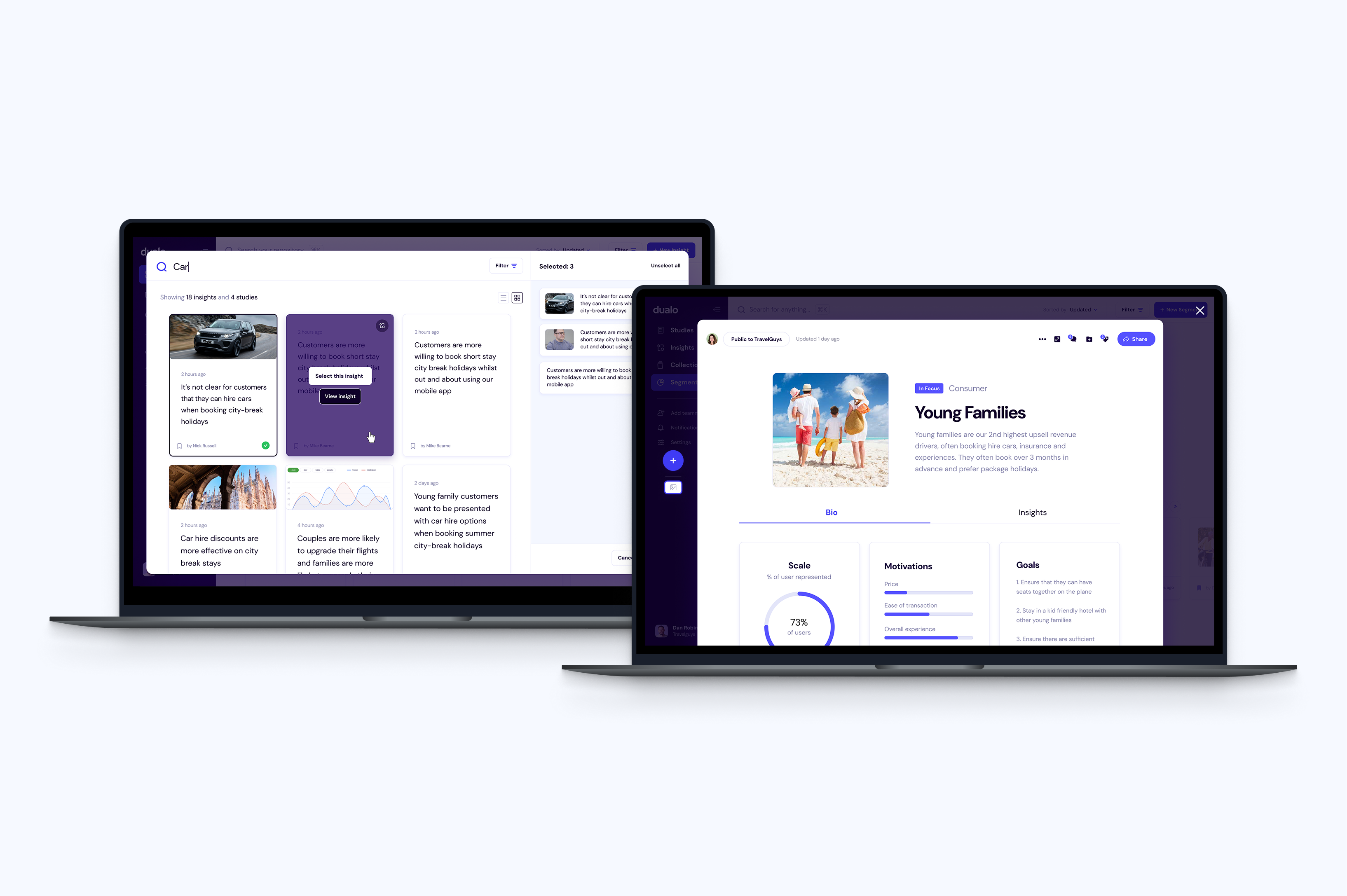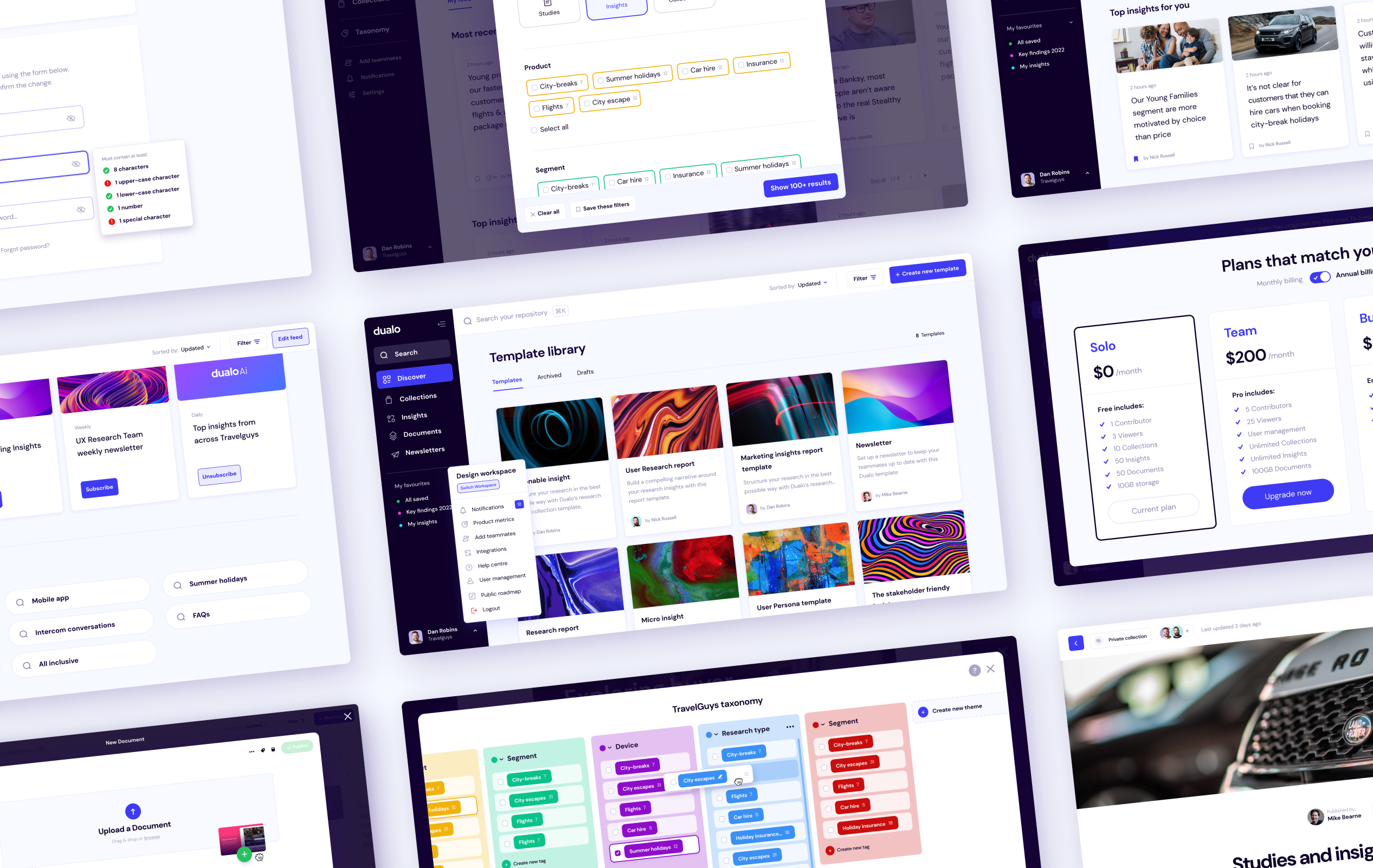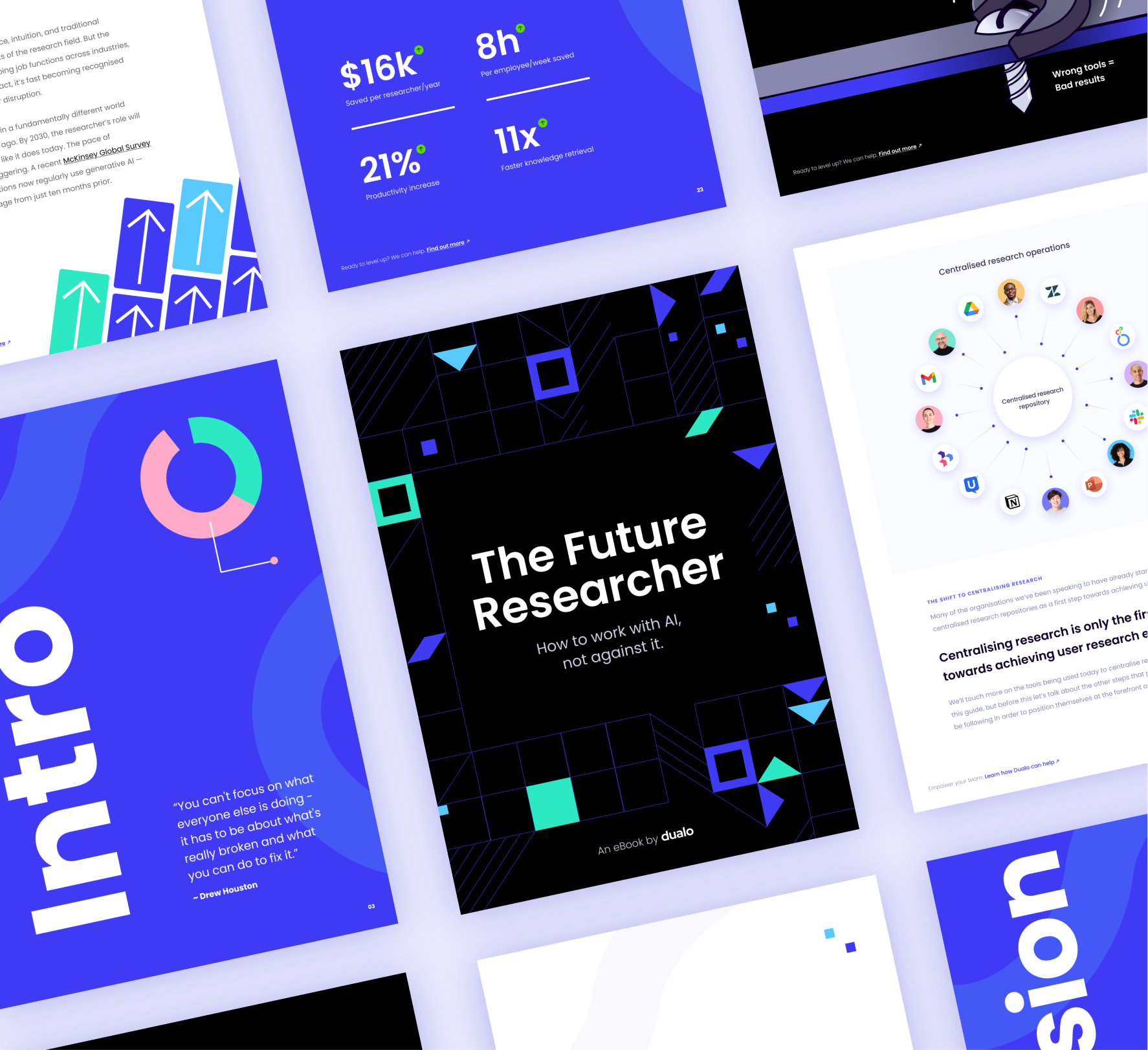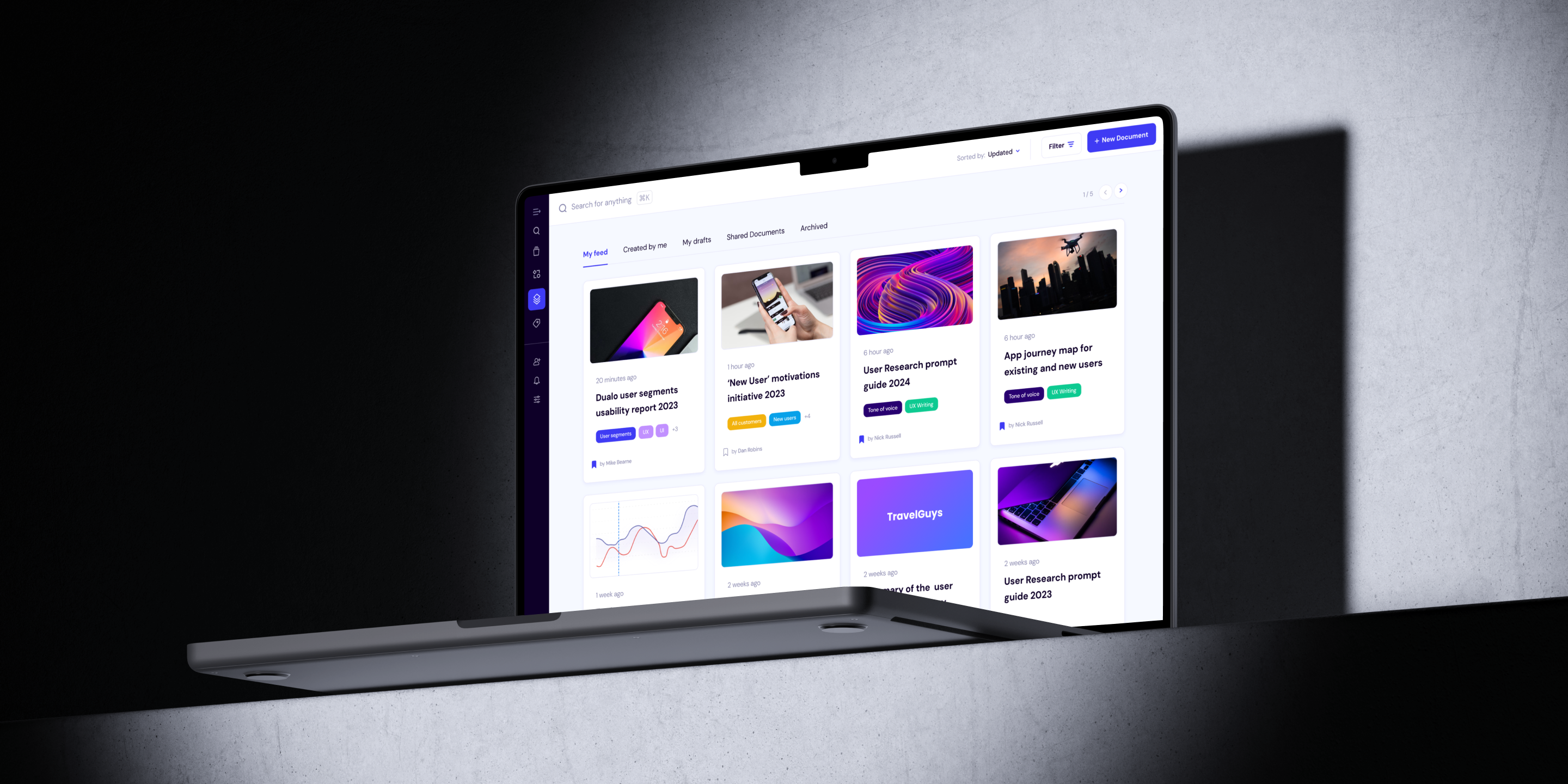
Despite the explosion of design and research tooling, most product teams still rely on messy docs, static decks, and forgotten wiki pages to organise and share the insights they're discovering.
In 2020, I co-founded Dualo — a B2B platform designed to help UX, Design, Research, and Product teams break down silos and turn insights into action.
As Creative Director, I led the product’s go-to-market design and strategy: from research and branding, to prototyping, testing, launch and beyond.
The Challenge
We’d raised £140k in angel investment pre-product, pre-revenue. The challenge was to design, validate and launch an MVP solution that solved a real problem — and that customers would pay for.
We set out to understand and address a growing frustration: product teams were drowning in knowledge, yet couldn’t access it when it mattered. Our mission was to build a tool that solved the right problems around insight discovery, without overwhelming teams with yet another platform.
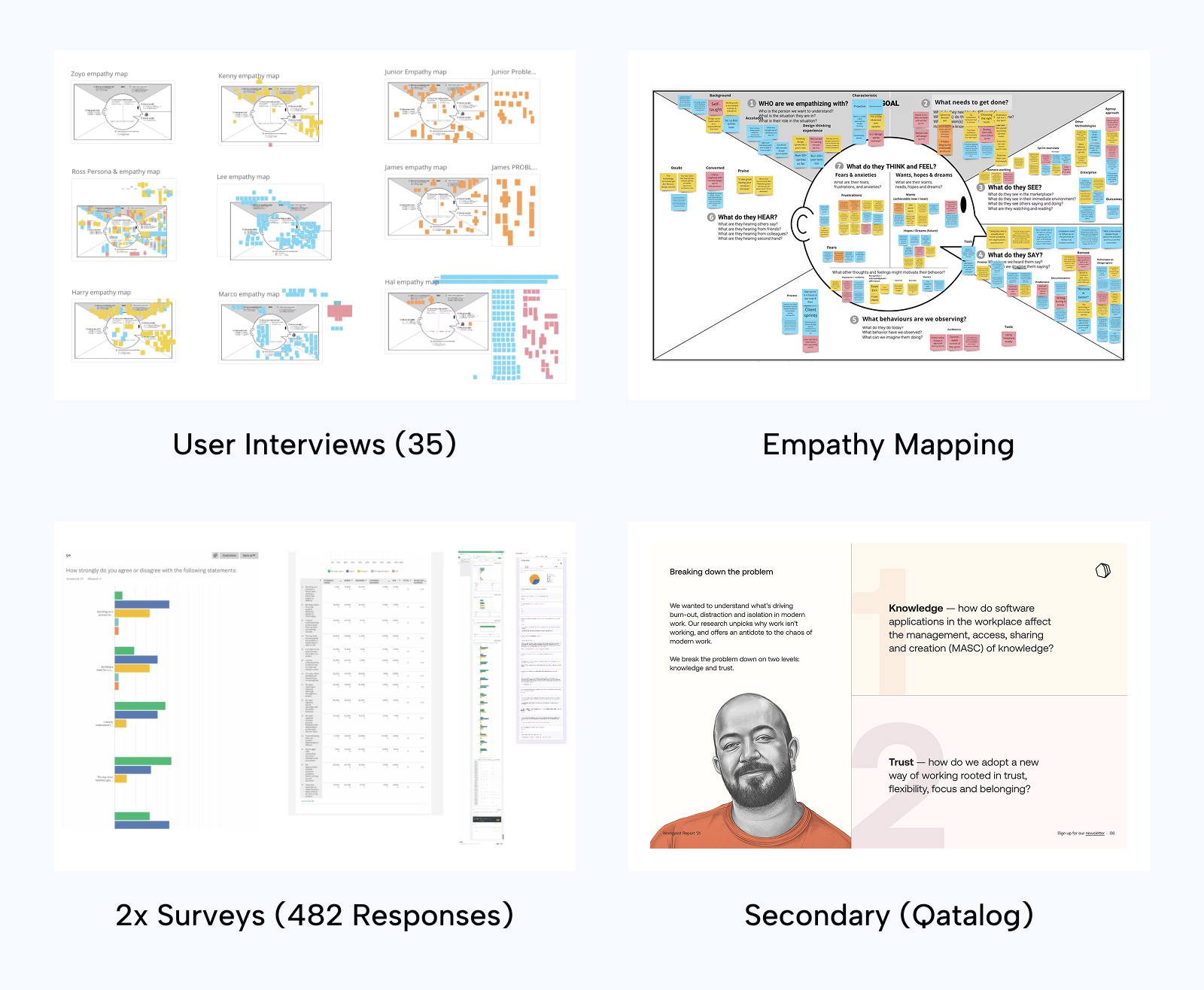
We began with 35 in-depth interviews across our target audience — UX Researchers, Product Managers, Designers, Data Scientists, and Product Stakeholders. Using empathy mapping, we identified key pain points across workflows, tooling, and team collaboration.
We triangulated this with primary quant data from two surveys (482 responses), and mixed method secondary research from Qatalog and Cornell University.
Key Insights from Discovery
We focused on 4 key insights discovered during our research:
- 75% of respondents said they worked in silos, with “little to no” visibility beyond their immediate project.
- The average product team has “100+” UX reports, yet less than 18% of stakeholders knew how to find or access them when needed.
- 49% of teams conducting research worried that their insights would never reach the intended audience.
- Teams were losing ~59 mins/day searching for insights and past project information buried in decks, docs, and Slack threads.

